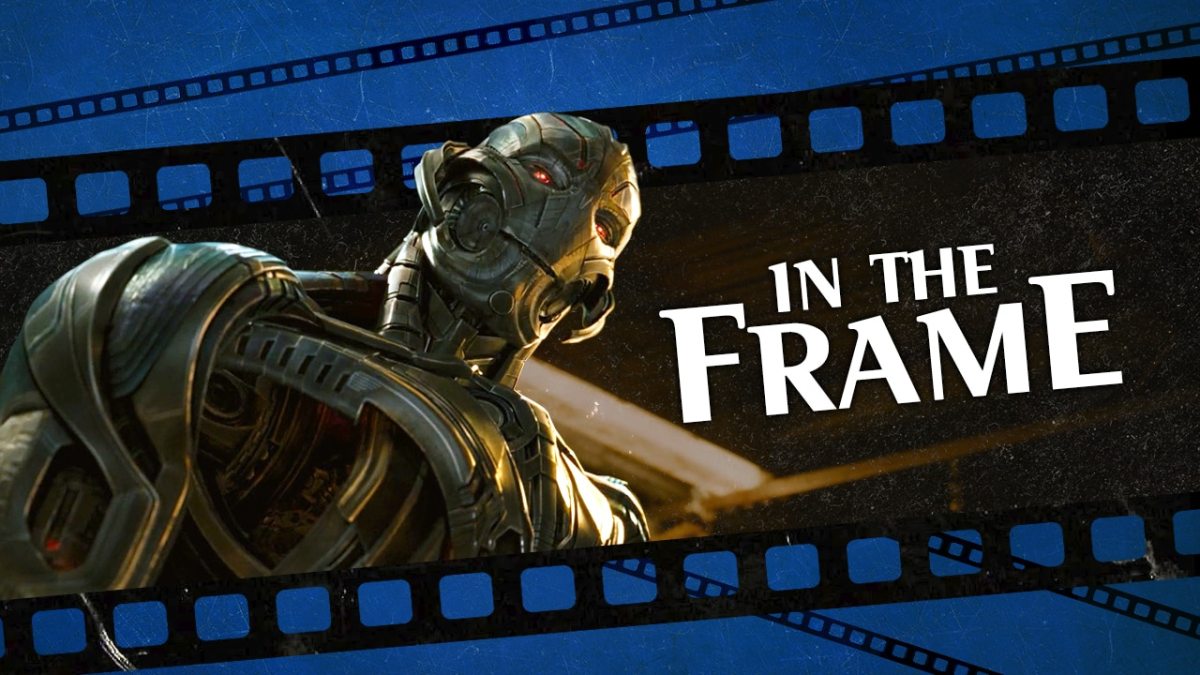Avengers: Age of Ultron exists as a limit case for the Marvel Cinematic Universe (MCU).
To be clear, Age of Ultron is a deeply flawed film. However, unlike something like Thor: The Dark World, Age of Ultron is flawed in compelling ways. The problems within Age of Ultron are indicative of larger problems with the MCU in general. More than that, the film is very much in conversation with these flaws.
Whedon is a writer and director who is best known for his understanding of genre and function. His television show Buffy the Vampire Slayer played with genre conventions in a very conscious manner. His script for Cabin in the Woods was a blistering critique of trends within the horror genre. Whedon codified a certain type of self-awareness that modern pop culture takes for granted.
The Avengers is one of the great cinematic arguments in favor of the superhero as a dominant cultural genre, recognizing the importance of these icons as a utopian fantasy. The Avengers comes down to a climax in which the heroes defeat both an invading army and an atomic bomb, literalizing Grant Morrison’s assertion that the superhero is “a faster, better, stronger idea” than the bomb.
Age of Ultron is just as engaged with the idea of the superhero as The Avengers. Like most great sequels, it explores its predecessor’s themes from a different angle. Age of Ultron is more ambivalent towards the idea of the superhero, particularly in the era of the War on Terror. The “Iron Legion” and plans for “a suit of armor around the world” are deliberately unsettling.
The bulk of the MCU is defined and shaped by the War on Terror. The superhero film genre often feels like an attempt to recreate 9/11 – consider the attack on Asgard in The Dark World, the holes in the sky over New York in The Avengers or Infinity War, the falling women in Infinity War and Endgame. Age of Ultron is the rare MCU movie actively anxious about that, alongside Iron Man 3.

Still, Age of Ultron is perturbed about more than just the political resonance of superheroes. It is worried about the genre in general, about the logic underpinning it, and the challenges that poses in telling meaningful stories about real people. It is notable that Age of Ultron is the last time that the MCU dedicates meaningful screen time to humanitarian efforts – protecting civilians in warzones.
At its core, Age of Ultron is a story about monstrous reproduction. This is a familiar narrative archetype, one that conjures up images of Mary Shelley’s Frankenstein. Tony Stark (Robert Downey Jr.) insists that he and Bruce Banner (Mark Ruffalo) should “own” the fact that they are “mad scientists.” Age of Ultron is a story about laboratories, monsters, and grotesque children.
Age of Ultron argues that reproduction is an essential part of growth, that it allows human beings to perfect themselves. Ultron (James Spader) argues that parents have children who are “designed to supplant them, to help them… end.” Of course, Ultron misunderstands this directive to the point of arguing for mass extinction, but the basic logic underpinning it is sound.
Age of Ultron is populated by characters who want to end. The film opens with the Avengers raiding the last Hydra base to recover the scepter from The Avengers, closing the book on that chapter. Thor (Chris Hemsworth) is planning to return to Asgard, his work done. “This brings it to a close,” Thor states, roughly 10 minutes into a two-and-a-half-hour film.
Tony had signaled his desire to retire from superheroism in Iron Man 3, longing for a “clean slate.” Tony and Bruce design Ultron so that they can effectively quit. When Steve Rogers (Chris Evans) complains how Ultron research would affect the team, Tony corrects him: “That would end the team. Isn’t that the mission? Isn’t that the ‘why’ we fight, so we can end the fight, so we get to go home?”

This makes sense. The ideal of the Avengers should be to create a world where they are redundant. Subjected to hallucinations by Wanda Maximoff (Elizabeth Olsen), Steve imagines a reunion with his sweetheart Peggy Carter (Hayley Atwell). “The war’s over, Steve,” the vision assures him. “You can go home. Imagine it.” However, Age of Ultron understands that such a scenario is unimaginable.
This is the reality of comic book storytelling. Superheroes are stuck in a perpetual status quo. While audiences accept “the illusion of change,” few major comic book characters are ever allowed to truly change or evolve or end. Comics are essentially trapped in a perpetual second act, a story without an ending. Often, they cannot have marriages or children because it makes them seem old.
As such, every attempt to evolve or to propagate in Age of Ultron becomes monstrous. Ultron is a misbegotten attempt by Tony to design a child. Nick Fury (Samuel L. Jackson) even invokes reproduction in his description of Ultron’s global reach, warning the team that the “guy’s multiplying faster than a Catholic rabbit.”
Age of Ultron has (understandably) been criticized for its treatment of Natasha Romanoff (Scarlett Johansson). Natasha was sterilized in the Red Room to prevent her having children. It’s a questionable choice, but it fits with the themes of the film. Natasha even ties that sterility to her life as a superhero, describing children as “the one thing that might matter more than a mission.”
However, it isn’t just Natasha who is unable to procreate. Tony and Ultron try to engineer successors to no avail. Even Bruce himself explains that it is impossible for him to have children. “I can’t have this – kids,” he says. “Do the math. I physically can’t.” Clint Barton (Jeremy Renner) can have a family, but only because the precariousness of his position on the team is a recurring joke and because he keeps his family hidden away from his hero life.

These superheroes are Sisyphus, always pushing a boulder up a hill only to see it roll back down again. No sooner have the Avengers recovered the scepter than Ultron has escaped with it again. The climax of the film takes place in the fictional nation of Sokovia, which Maria Hill (Cobie Smulders) describes as “nowhere special, but it’s on the way to everywhere special.”
That is as much a summary of Age of Ultron and the superhero genre itself. These stories hinge on the promise rather than the process of change. They are about anticipation rather than delivery, about repetition rather than innovation. Whedon reinforces this by homaging classic superhero scenes like the laboratory argument from The Avengers and even the train rescue from Spider-Man 2.
Age of Ultron is explicitly about these limitations and the frustrations of them. Whedon has talked about how difficult it was to work with Marvel on the film: Whedon could give Clint a family, but he had to trade that for a subplot in which Thor teases the next four years of the MCU.
This sense of monstrous stasis is reflected in the film’s ending. The Avengers don’t defeat Ultron because they’ve learned anything or grown as people. Instead, Tony defeats Ultron by doing exactly what he did at the start of the movie, but hoping that this time it works out. Tony and Bruce create another artificial intelligence to save the world.
Bruce points out the absurdity of this plotting. “I’m in a loop!” he insists. “I’m caught in a time loop. This is exactly where it all went wrong.” Tony rejects that hypothesis. “It’s not a loop,” Tony assures him. “It’s the end of the line.” Naturally, this time the mad scientist scheme works out. Tony and Bruce create the Vision (Paul Bettany), and the Vision defeats Ultron. That’s a grim take on the superhero genre: Just repeat the formula until it works.

This is the horror of the perpetual second act, of the narrative engine that refuses to allow characters to grow or learn. It’s notable that the MCU after this point all but gives up on the idea of lasting consequence: Tony never faces justice for building Ultron, an arrest warrant for Bruce is “in the air” but never materializes, and Steve never faces the consequences of his choices in Civil War.
This becomes the template of Marvel Studios films going forward. Spider-Man: Homecoming has Tony punish Peter Parker (Tom Holland) for taking crazy risks that don’t pay off, only for Peter Parker to redeem himself by taking even crazier risks that do pay off. Nobody learns or grows. At least Age of Ultron realizes how depressing that is.
Age of Ultron pushes the superhero story to its breaking point, as proof that the breaking point exists. It demonstrates the horrors of a world where a character’s story only ends when their actor’s contract expires rather than because their story has run its course. It is a world without any endings. That’s obscene.
To be fair, there are superhero movies with definitive endings, like James Mangold’s Logan or Christopher Nolan’s The Dark Knight Rises. However, these are very much the outlier. Marvel Studios has plans for the franchise stretching half a decade in advance. Even Endgame is as much about positioning characters and concepts going forward as it is about cycling out older cast members.
“They’re doomed,” Ultron laments of the heroes at the center of this story. “Yes,” the Vision concedes. “But a thing isn’t beautiful because it lasts.” Age of Ultron understands not only that this is true, but that the MCU can never acknowledge it.






Published: May 11, 2020 11:00 am